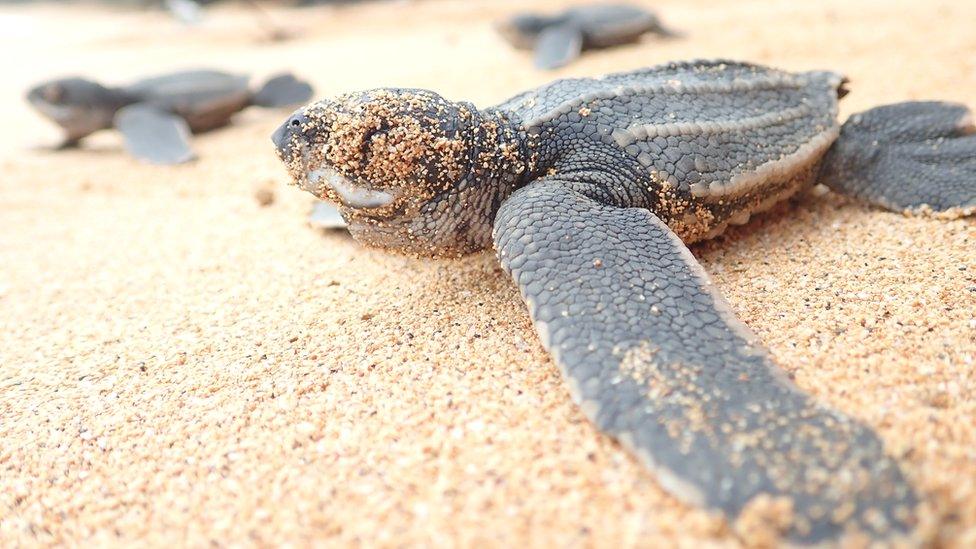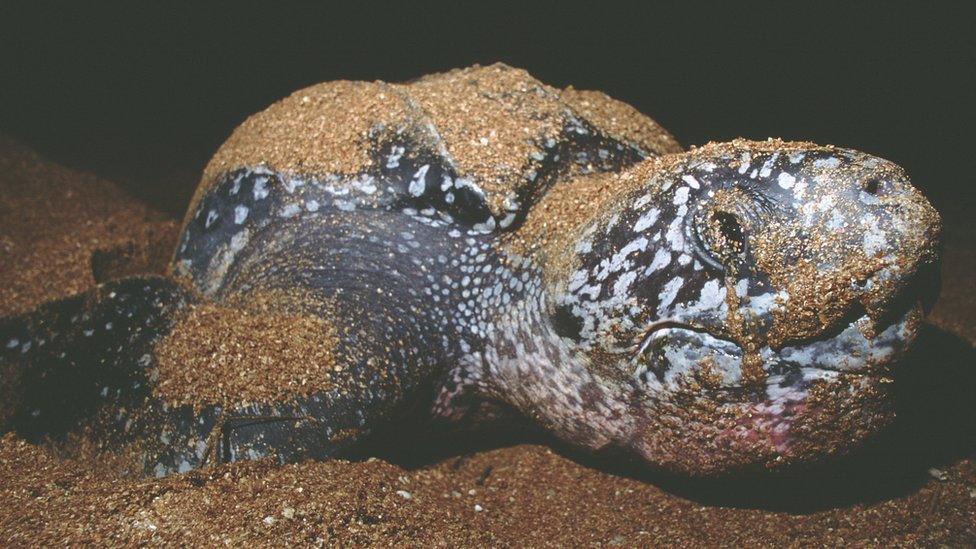10 years to save 'world’s most threatened sea turtle'
- Published

Numbers are declining due to accidental fishing and egg collecting
The largest turtle in the ocean, the leatherback gets its name from its tough, rubbery skin.
Migrating long distances a year, the turtle can cross the Pacific Ocean.
But with threats like getting tangled in fishing gear, the future for one distinct population looks "dire," say conservation groups.
At the current rate of decline, the critically endangered Eastern Pacific leatherback turtle will vanish within 60 years.
We have just 10 years left to put measures in place to save it, says a group of conservation scientists and organisations including Fauna & Flora International (FFI).
"We have it within our power to protect these animals and enable them to thrive, but all those who have a hand in shaping their future need to work together to do so," said Alison Gunn, programme manager for the Americas and the Caribbean at FFI.

Egg collection on nesting beaches is a threat
Leatherback turtles are found across the world. While considered a single species, populations found in different oceans are reproductively distinct. The Pacific leatherbacks are most at risk of extinction, with both Eastern Pacific and Western Pacific leatherbacks continuing to decline.
Key nesting habitats in the Eastern Pacific are in Mexico and Costa Rica, with some isolated nesting in Panama and Nicaragua. Over the last three generations, there has been a greater than 90% decline in the female nesting population.
"If this particular population goes they're completely irreplaceable, because they're unique to this particular part of the oceans," said Alison Gunn. "There's a lot of conservation action happening right now. We need to increase the collaboration that's already happening in order to ensure that this population is not lost."
Key interventions
If conservation efforts are targeted and scaled up at high-priority sites, and projects are quickly implemented and maintained, the Eastern Pacific leatherback population can eventually stabilise and increase, according to a population model.
Two things must be achieved in the next 10 years to save the Eastern Pacific leatherback:
Avoiding the deaths of 200-260 leatherbacks a year caused by "bycatch" of turtles in fisheries
Producing 7,000-8,000 more hatchlings a year through better nest protection and improved incubation conditions.
Leatherbacks are the largest of all sea turtles, weighing up to 2,000lb (900kg) and reaching over 6ft (2m) in length.
The population of leatherbacks in the Eastern Pacific has declined by more than 90% since the 1980s, which qualifies as Critically Endangered on the IUCN Red List of Threatened Species.
The study is published in the journal, Scientific Reports.
Follow Helen on Twitter, external.